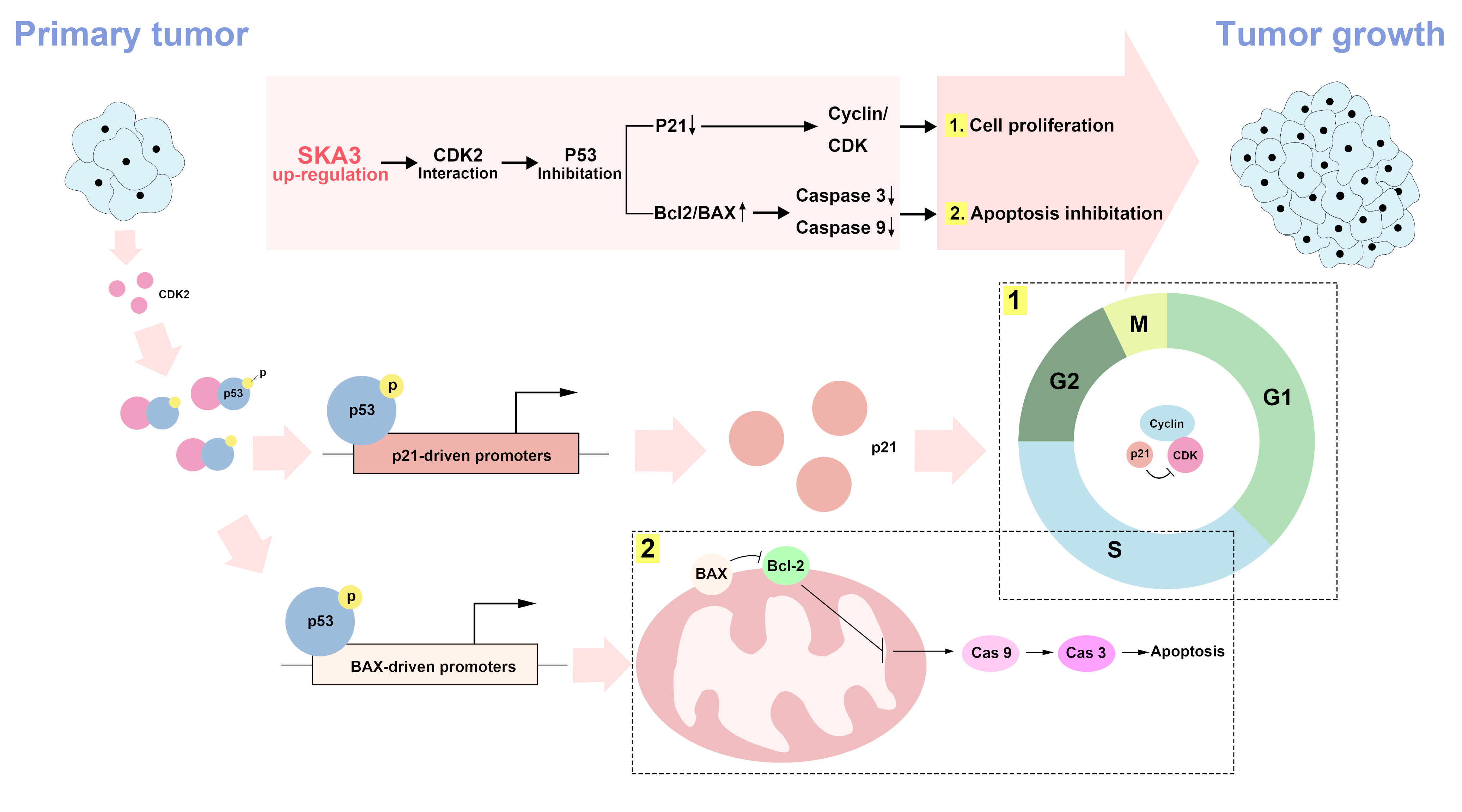Spindle and Kinetochore Associated Complex Subunit 3 Promotes Tumor Growth by Regulating CDK2/p53 Phosphorylation in Hepatocellular Carcinoma
1Organ Transplant Center, The First Affiliated Hospital of Sun Yat-Sen University, Guangzhou, China, 2The First Affiliated Hospital of Sun Yat-Sen University, Guangzhou, China, 3Organ transplant center, The First Affiliated Hospital of Sun Yat-Sen University, Guangzhou, China
Meeting: 2019 American Transplant Congress
Abstract number: 151
Keywords: Genomic markers, Hepatocellular carcinoma, Liver, Risk factors
Session Information
Session Name: Concurrent Session: Liver Transplant Oncology
Session Type: Concurrent Session
Date: Sunday, June 2, 2019
Session Time: 4:30pm-6:00pm
 Presentation Time: 5:42pm-5:54pm
Presentation Time: 5:42pm-5:54pm
Location: Room 311
*Purpose: Spindle and kinetochore-related complex subunit 3 (SKA3) is a part of the spindle and kinetochore-related complexes, which are crucial for the proper timing of late mitosis. Up-regulation of SKA3 suggests poor prognosis in patients with renal cell carcinoma and colorectal cancer. However, the correlation between SKA3 and hepatocellular carcinoma (HCC) is not clear. We aimed to explore the mechanism of SKA3 in HCC.
*Methods: We analysed the datasets in TCGA and GEO database to find different genes. Then we performed immunohistochemical staining and qRT-PCR to certify the up-regulation of SKA3 in tumor tissues. Small interfering (si) RNA transfection was used to down-regulate SKA3 in LM3 and Huh7 cell lines. Cell count KIT-8 (CCK8) assay was used to analyze cell proliferation. Cell migration and invasion were measured by scratch wound healing test and migration test. The subcutaneous xenotransplantation model was used to investigate the role of SKA3 in tumor formation in vivo. Finally, we used co-immunoprecipitation to explore the correlations between SKA3, CDK2 and p53 phosphorylations.
*Results: Bioinformatics analysis revealed that the high expression of SKA3 in HCC suggests poor prognosis . Consistently, immunohistochemical staining of 95 pairs of tumors and adjacent normal liver tissues (ANLT) also showed up-regulation of SKA3 expression (Fig A). Down-regulation of SkA3 significantly inhibited tumor proliferation and invasion in vivo and in vitro (Fig B). Gene enrichment analysis (GSEA) showed that SKA3 may affect tumor progression through cell cycle and P53 signaling pathway. In addition, SKA3 knockout resulted in G0/G1 phase arrest and severe apoptosis, as demonstrated by inhibition of CDK2/p53 phosphorylation and down-regulation of p21 and BAX/Bcl-2 level in HCC cells (Fig C).
*Conclusions: It is suggested that SKA3 can promote the cell proliferation and inhibit apoptosis of tumor cells in HCC through interaction between CDK2 and p53 (Fig 2).
To cite this abstract in AMA style:
Hou Y, Wang Z, Wu L. Spindle and Kinetochore Associated Complex Subunit 3 Promotes Tumor Growth by Regulating CDK2/p53 Phosphorylation in Hepatocellular Carcinoma [abstract]. Am J Transplant. 2019; 19 (suppl 3). https://atcmeetingabstracts.com/abstract/spindle-and-kinetochore-associated-complex-subunit-3-promotes-tumor-growth-by-regulating-cdk2-p53-phosphorylation-in-hepatocellular-carcinoma/. Accessed December 24, 2025.« Back to 2019 American Transplant Congress


